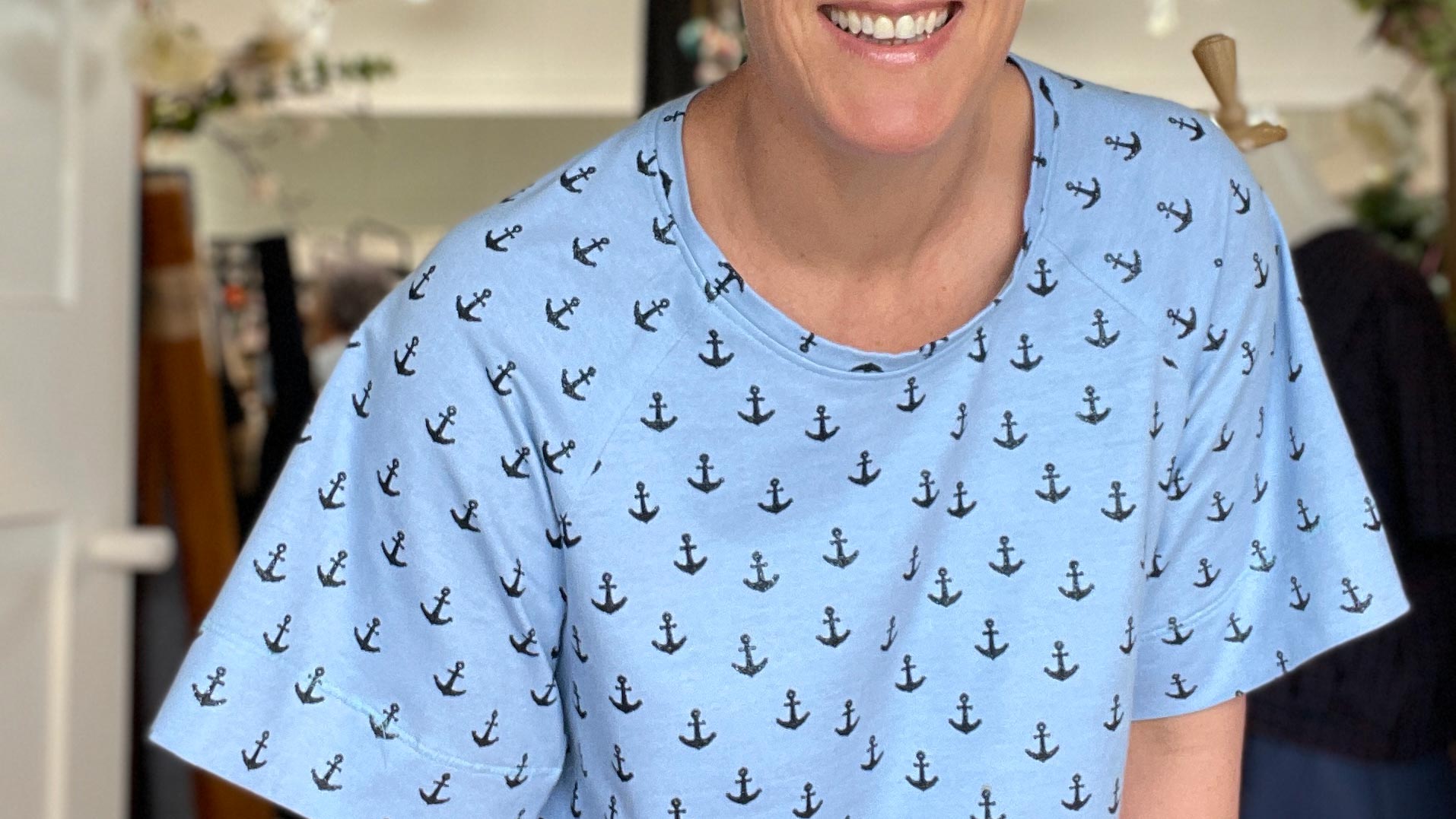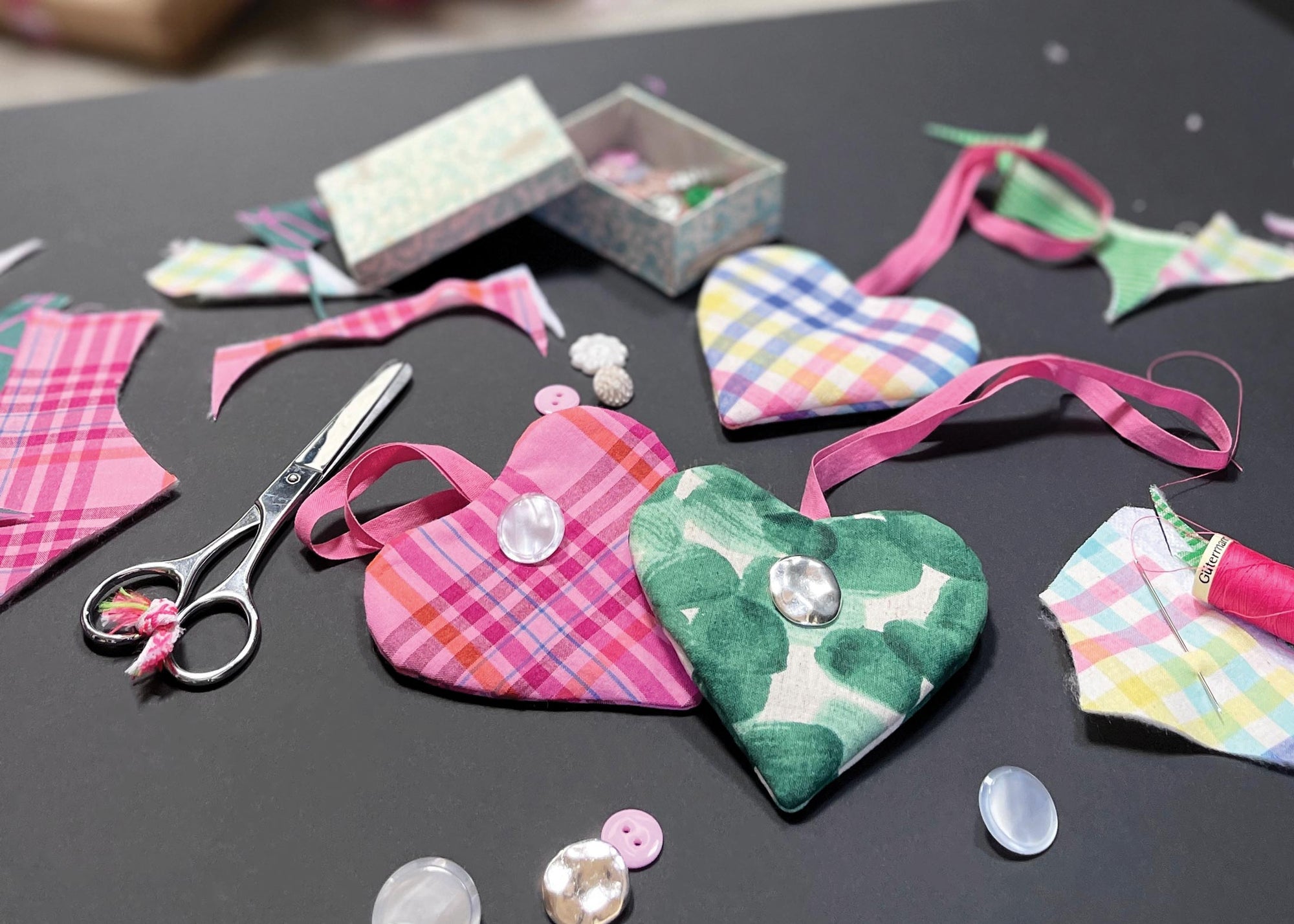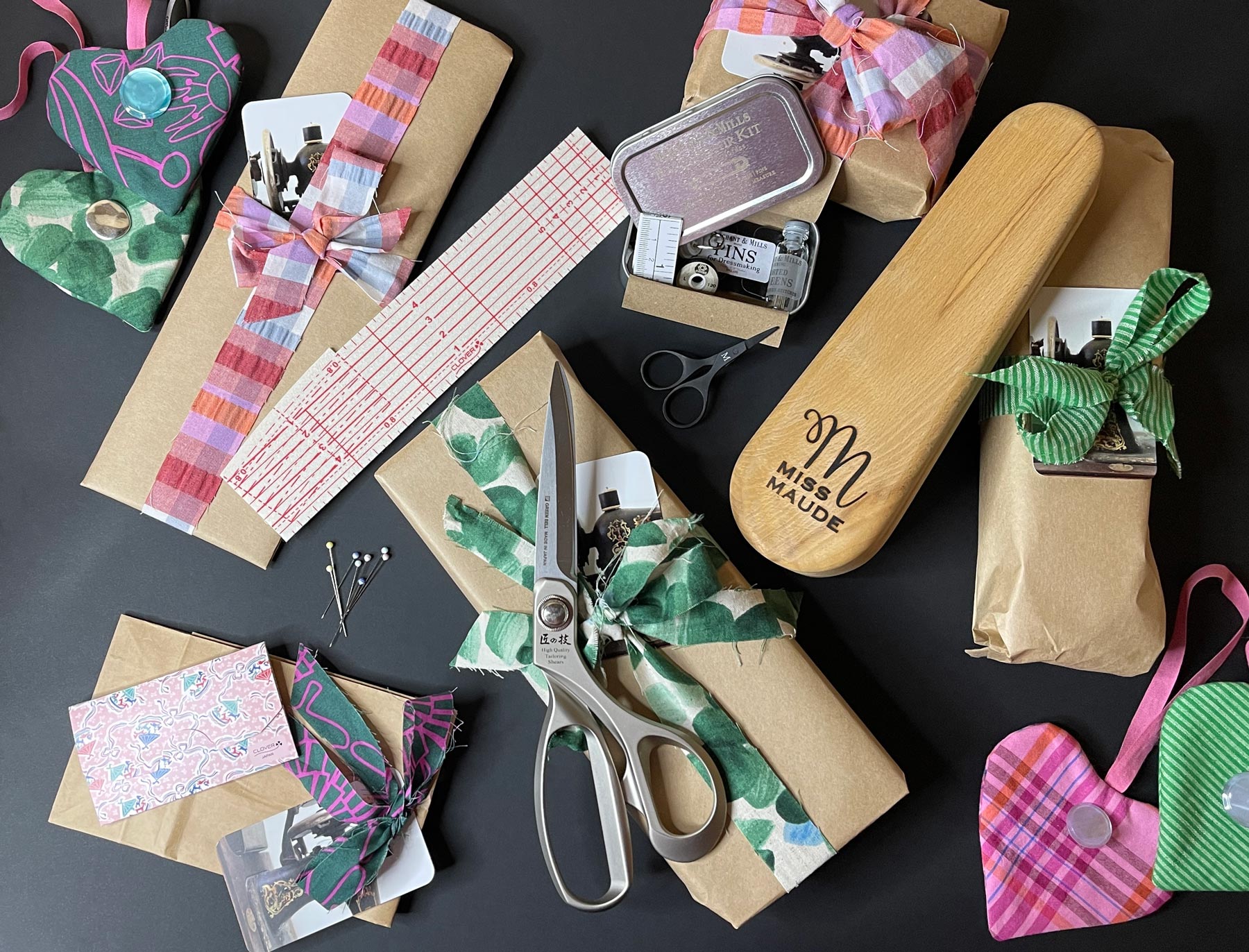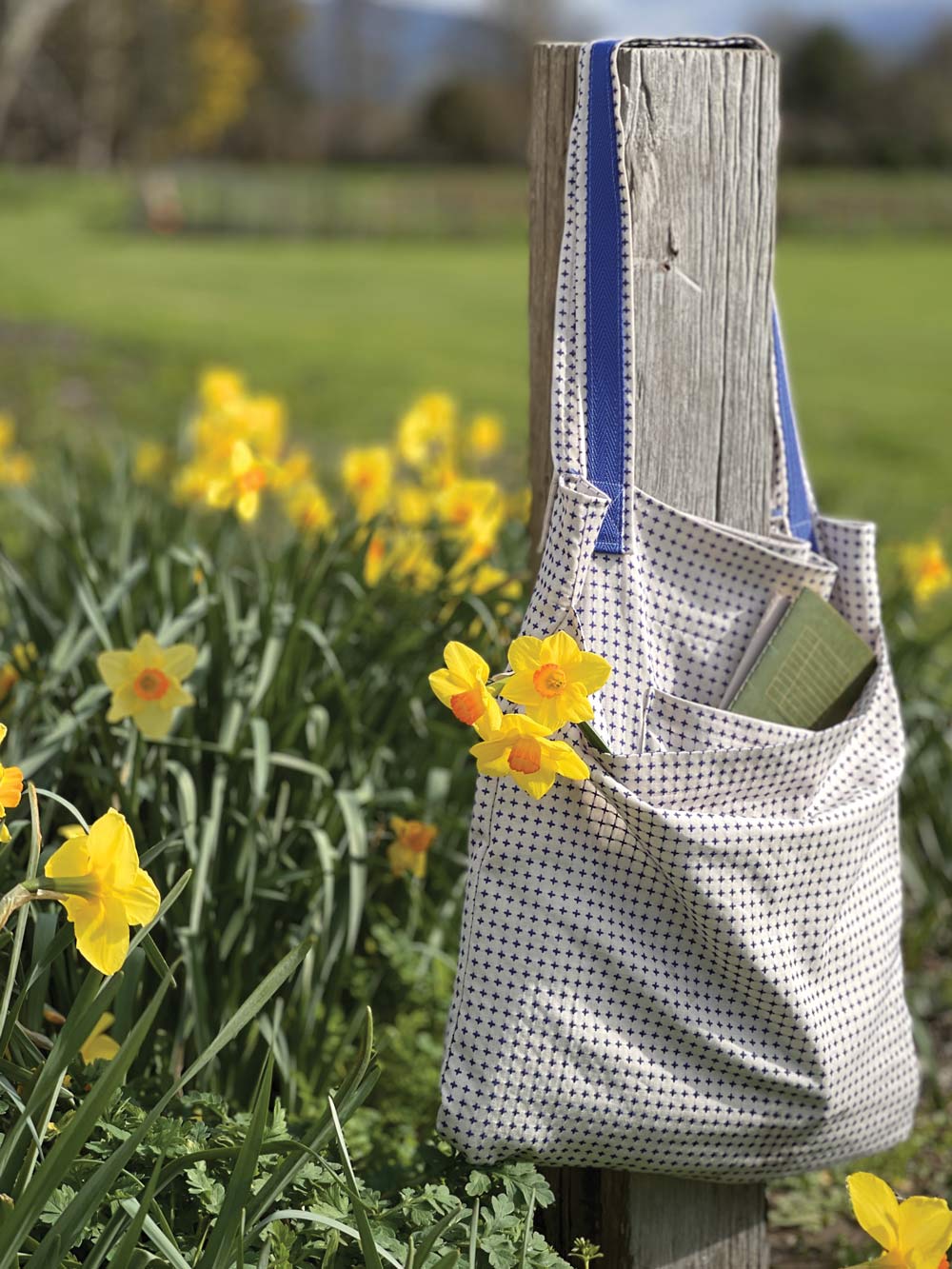A little while ago (when I say little, it was 18 months ago! Time. Has. FLOWN) we asked Gabrielle (otherwise as Bibbity Bobbity Buttons on social media) to come on board as a contributing blogger. Her first project for us was the Beryl Bomber Dress in Needlecord. She then creatively came up with ways to use some of her fabric scraps from that project. This is the first of two blog posts that she wrote for us detailing how she used the fabric offcuts. Hopefully this will spark some inspiration for you on how you can use some of your sewing scraps! And although Gabrielle made this in the winter, I could see this working just as well in the summer, keeping your hair out of the way in the heat!
(For transparency, I have provided the fabrics, pattern and paid for her precious time)
THE RIB-KNIT HEADBAND
By Gabrielle of Bibbity Bobbity Buttons

I finished my Beryl Bomber dress, made from Miss Maude’s beautiful Rose Pavilion Needlecord and matched with some fabulous rust-coloured rib-knit in early winter, and although I had a plan spring immediately to mind for how to use the scraps from the rib-knit, it took a little while longer to arrive at a project for the remaining needlecord…
I don’t know about you, but I get cold ears. It’s the worst feeling, so I have hats and headbands on high rotation in my winter wardrobe. When this rusty rib-knit arrived, I immediately saw how great it would be as a headband and kept my fingers crossed that I would have enough left over with which to achieve that dream.

And there was plenty of fabric left over for my headband! As the first snaps of winter cold started to take hold, and on a crisp, clear morning before I was due to meet a friend for a coffee and walk in Wellington’s Botanic Gardens, I whipped this up in under an hour. This was made up on the fly, without a pattern, and the measurements are to accommodate my ginormous noggin, but it is simple enough to adjust for other more modestly sized heads.
HOW TO MAKE YOUR OWN RIB-KNIT HEADBAND

- Measure your head where you want the headband to sit.
- Cut a length of ribbing (along the line of greatest stretch) a little longer than the circumference of your head (for me, 24.5”) and about 4.5” wide. (The width of the headband can be easily adjusted to be wider or narrower depending on preference. Choose the final width you want, double it, and then add your preferred seam allowance to both sides.)
- Fold in two lengthwise and sew down the length of the ribbing, creating a tube.
- Feed the tube through itself so the right side is out and then press so the seam is hidden on the underside of the headband.
- At this point you want to get the fit right. Wrap the headband around your head, where you want the headband to sit, to figure out how long you should make the circumference. Use some negative ease from the ribbing to make sure it will stay on, but don’t make it too tight. Mark this length.
- While leaving enough seam allowance to join it into a circle, cut the length down (if necessary). Join the ends of the headband together. (Here, I fed one end inside the other and sewed it together in a pretty ad-hoc way, but just use a joining method of your choosing.)

I decided I wanted this joining-seam to be covered and chose to do so using another small tube of ribbing. Other ideas might be to use a bow or a bobble, you could use a different fabric, or you might just decide to leave it as is and have the joining-seam at the back of your head.

How to get a similar effect to mine.
- Cut a length of fabric 5.5” and 2.5”. (Note, these measurements make a tube circumference that is smaller than the width of the headband as I wanted the shaping that this created. However, these measurements are easily adjustable to your own preferences.)
- Follow steps 3 and 4 from the headband instructions.
- Wrap the tube around the seam of the headband, choosing how you want the pleat to sit within the tube, making the tube tighter or looser depending on preference.
- With the right sides of your tube together, and with the headband pushed out of the way but within the tube, sew the ends of the tube together. At this point you will have two interlocking circles, with your tube linked around your headband like a chain.
- Place the seam of the tube to the underneath of the headband, covering up the seam of the headband, and slipstitch in place.








